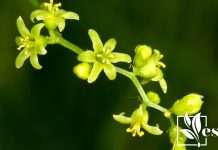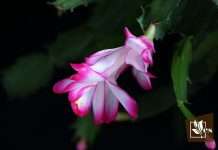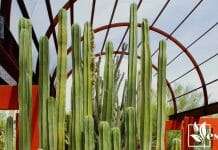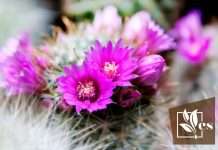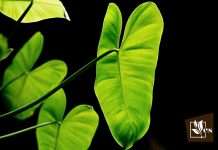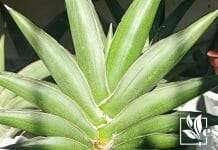- When Are Raspberries Ready to Pick: A Comprehensive Guide for Gardeners - July 11, 2024
- When Are Red Delicious Apples Ready to Pick: Essential Harvesting Tips - July 11, 2024
- When Are Snow Peas Ready to Pick: Essential Harvest Tips - July 11, 2024
Knowing how to identify edible Aloe vera plants of the Asphodelaceae family is important, as these have many medicinal and health benefits that you could enjoy. Aloe gel and juice contain vitamins, minerals, and antioxidants, and Aloe vera juice is helpful for weight loss or for lowering blood sugar levels.
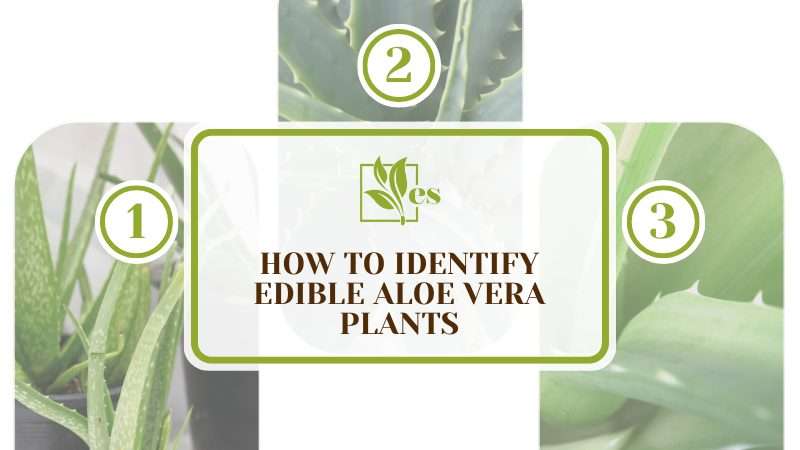
This is why it’s essential to identify edible vs. nonedible Aloe vera plants or plants that look like Aloe Vera. This guide consists of simple steps to help you understand which kind of aloe vera is edible.
JUMP TO TOPIC
How To Properly Identify Edible Aloe vera Plants?
To properly identify edible Aloe plants, you should understand these subtropical plants. The plants are characterized by their thick, fleshy leaves that have serrated edges and a spiky appearance and grow to about 35 inches tall and wide. You can observe yellow-orange flower spikes on mature plants.
The clear gel-like substance in the leaves is known as Aloe vera gel. Read this identifying and plant care guide so that you learn how to distinguish the good plants from non edible Aloe vera plants or even poisonous Aloe vera plants.
Only Aloe vera plants are edible. Aloe aristata and other species other than A. vera are not only inedible but also poisonous. What happens if you eat non edible Aloe vera? You can get stomach pain and diarrhea, and in case you ingest a lot of it, worse problems can appear, so refrain from consuming anything you don’t know for sure that it’s edible.
1. Familiarize Yourself With the Appearance of Aloe Vera Plants
Familiarizing yourself with the appearance of Aloe plants is an important step in identifying them correctly, especially if you need more knowledge and understanding of the Aloe vera plant.
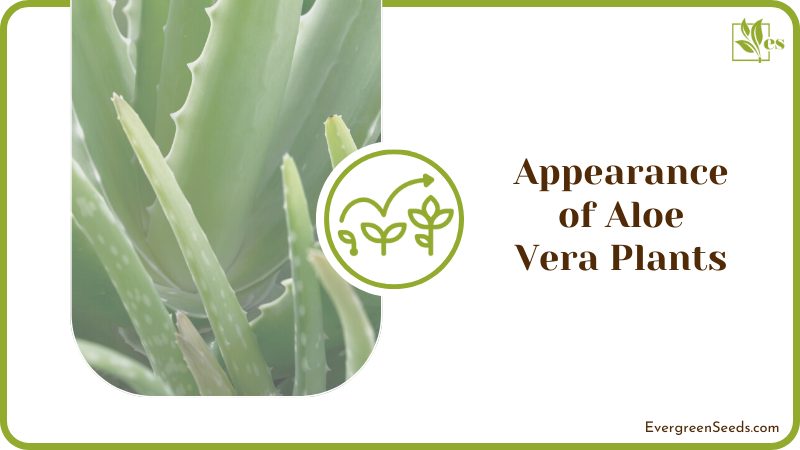
Aloe plants have distinct characteristics that make them easy to recognize once you know what to look for. Here are a few ways to familiarize yourself with the appearance of an Aloe species.
Firstly, you can look at pictures of Aloe plants (they’re also known as Aloe barbadensis miller) and study their characteristics, such as leaf structure, size and color, and plant location. You can also visit a local nursery or botanical garden – many nurseries and gardens have Aloe vera plants on display. This will allow you to see the plants in person and ask experts for more information.
This is a fantastic way to learn about the appearance of the plant, as you will be able to observe the plant’s growth from a small plant to maturity.
By familiarizing yourself with the appearance of Aloe plants, you will be able to identify them correctly and take proper care of them. Also, it’s essential to consider that not all Aloe species are edible or have medicinal properties, so it’s crucial to tell them apart.
2. Check for Flower Spikes
Another way to identify whether Aloe vera is edible is by looking for the yellow-orange flower spikes on mature plants. This is a reliable way to identify edible Aloe plants, as not all Aloe species produce these spikes.
Edible Aloe vera plants produce tall flower spikes that can grow up to 35 inches tall. They typically appear in the summer and fall months. The spike should be sturdy and straight, not wilted or bending over. Here are a few ways to check for flower spikes.
First, look for a tall, spike-like structure – a mature Aloe vera plant will have a tall, spike-like structure that emerges from the center of the rosette. The spike can be anywhere from a few inches to a few feet tall, depending on the size of the plant. Be sure to check the spike’s color, which should be yellow or orange.
You may also want to check the number of branches. Edible Aloe vera plants typically have one or two branches at the top of the spike, but some species may have more.
It’s important to note that not all Aloe species produce flower spikes or have medicinal properties, so it’s crucial to understand the difference in the identification process.
3. Check the Location of the Aloe vera Plant
Checking the location of an Aloe plant is important for identifying if it’s edible because it can provide valuable information about the plant’s growing conditions and help you determine whether it’s the good kind or not. Here’s what to look for.
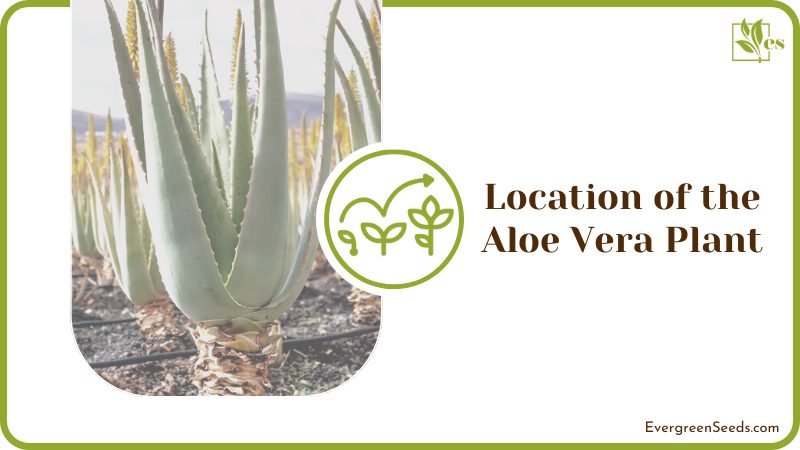
First, check the climate: Aloe vera is native to arid regions of the southeastern part of the Arabian Peninsula, so it thrives in hot, dry climates. If you find an Aloe plant growing in a region that is not typically hot and dry, it may not be edible. You can also check the soil – Aloe vera plants prefer well-draining soil, so if you find an Aloe plant in an area with poor drainage, it may not be edible.
Lastly, check for any pesticides, Aloe is a hardy plant resistant to most pests and diseases, so if you find an Aloe vera plant being treated with pesticides, it may not be edible. By checking the plant’s location, you can get a good idea of whether or not it’s an edible Aloe plant.
4. Compare the Leaf Structure, Size, and Color
Comparing an Aloe vera plant’s leaf structure, size, and color is crucial for identifying if it’s an edible variety. Compare the characteristics with that one you know are specific for Aloe vera. This will give you a fair idea of what to look for when identifying Aloe Vera plants. Here are some recommendations on how to do it.
Aloe plants have thick, fleshy leaves typically arranged in a rosette pattern. They have serrated edges and a pointed tip. If the plant you’re examining doesn’t have these characteristics, it may not be edible.
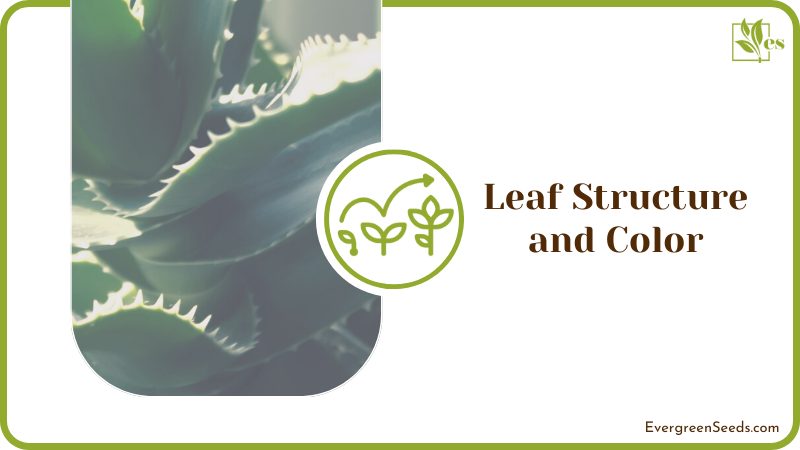
They can be different in sizes from a few inches to several feet long. The Aloe vera leaf should be thick and fleshy and have a glossy surface. The leaves may not be an edible Aloe vera plant if the leaves are thin and dry.
They are typically green but can also range from gray-green to yellow-green. The Aloe leaves should be a consistent color throughout. If the leaves have different shades of green or other colors, it may not be an edible Aloe plant.
5. Know the Difference Between Aloe vera and Other Aloe Species
Although we’ve made adequate progress in this area, it’s important in the identification process to also be able to distinguish it from species in the same genus. Hence, understanding the difference between different types of Aloe species is crucial for identifying if it’s an edible Aloe vera plant.
One of the main differences between Aloe vera and other Aloe species is the leaf structure. Aloe leaves are thick, fleshy, and have a glossy surface. They are typically a light green color and have a curved shape. Other Aloe species may have thinner, dryer leaves and a different shape.
The size of the leaves is also different between Aloe and other species. Aloe vera leaves are typically larger than those of other Aloe species.
Furthermore, Aloe will have spikes or flowers at the top of the plant. These spikes are a key characteristic of Aloe, and it helps you to identify an Aloe plant. It is also commonly found in cultivation and in many garden centers and nurseries. Other Aloe species may be less widely available and may be found in more specific regions.
Final note:
We hope you have gained the required knowledge on the edible Aloe vera benefits and how to identify them. If your Aloe Vera plant is dying check out some of our tips on how to save it.
References
- Efterpi V. Christaki and Panagiota C. Florou-Paneri. (15 April 2010). Aloe vera: A plant for many uses. Journal of Food, Agriculture & Environment.
Retrieved from https://www.researchgate.net/publication/265268175_Aloe_vera_A_plant_for_many_uses - İbrahim Kahramanoğlu, Chuying Chen, Jinyin Chen and Chunpeng Wan. (2 December 2019). Chemical Constituents, Antimicrobial Activity, and Food Preservative Characteristics of Aloe vera Gel. MDPI.
Retrieved from https://www.mdpi.com/2073-4395/9/12/831 - Kanika Mahajan, Sunil Kumar, Zuhaib F. Bhat, Maninder Singh, Hina F. Bhat, Muhammad A. Bhatti, Alaa El-Din A. Bekhit. (June 2022). Aloe vera and carrageenan based edible film improves storage stability of ice-cream. Science Direct.
Retrieved from https://www.sciencedirect.com/science/article/pii/S2772502222000889 - Adamu Tizazu Yadeta. (May 04, 2022). Food applications of Aloe species: A Review. HSPI.
Retrieved from https://www.plantsciencejournal.com/articles/jpsp-aid1070.pdf


